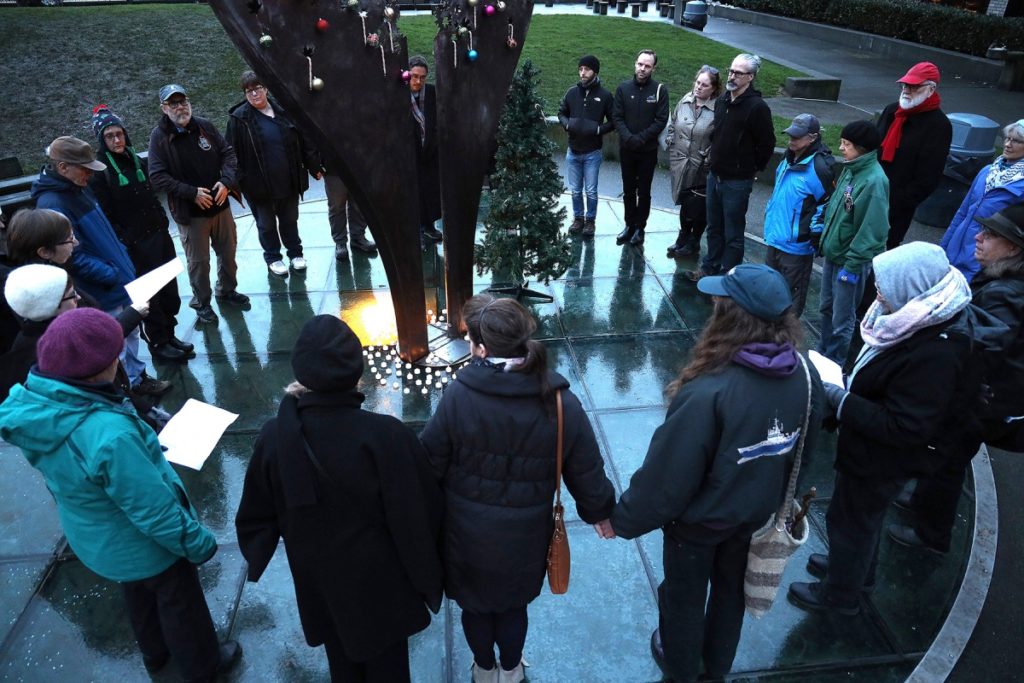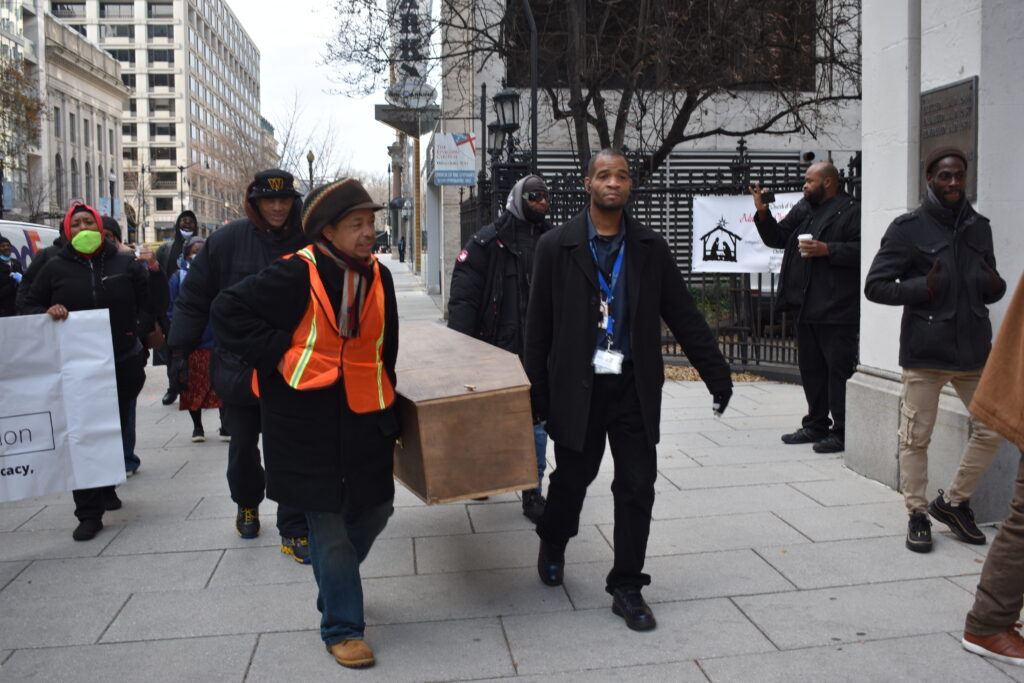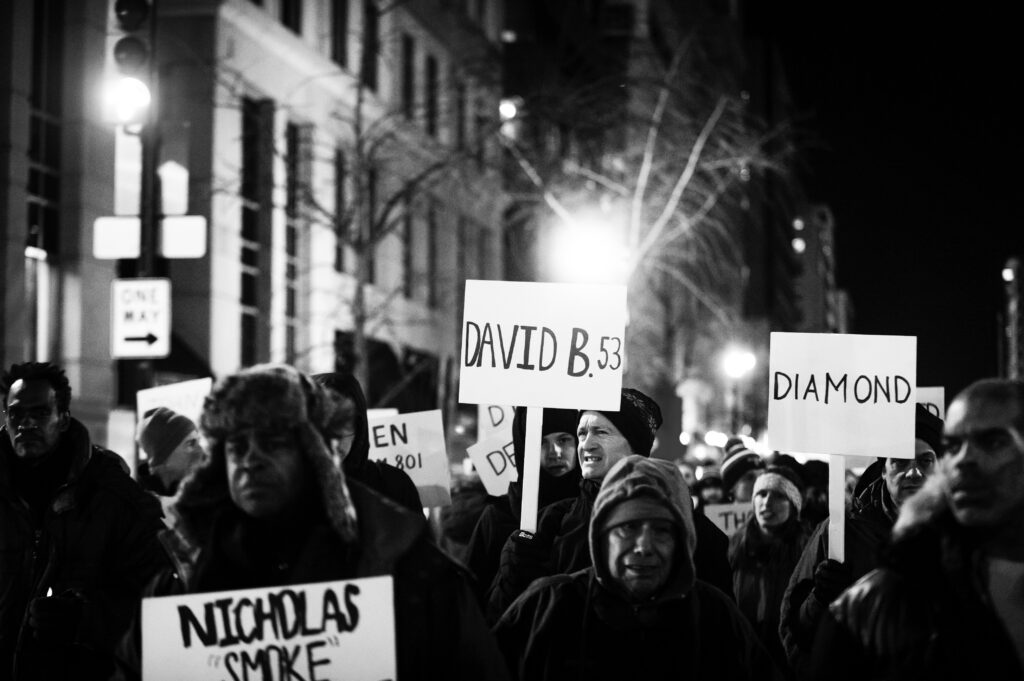In the third week of December, Alvin Robinson, a 61-year old man, was the 680th man to die homeless on the streets of L.A. County in 2019. 680!!! The number of homeless people who have died in L.A. County since 2013 has now surpassed 5,620. There’s more.
In Multnomah County, Portland, 530 people have died on the streets since 2011. In San Diego County, 767 since 2010. In San Francisco County, 400 since 2016. These aren’t estimates. These are real numbers by health officials.
The City of Philadelphia released a new report on Dec. 18 showing annual deaths among Philadelphians experiencing homelessness more than tripled since the city began gathering data, from 43 people in 2009 to 132 in 2018. For 2019, 275 people were memorialized by local advocates.
In the nation’s capital, advocates remembered 81 individuals during the local vigil, but data obtained by The Washington Post through a FOIA request showed at least 117 residents had died without a home in the District in 2019.
Thousands more are dying on the streets annually across America. No one should die without a safe place to call home in the richest nation in the world. These are our mothers, fathers, sons and daughters. They are our neighbors and friends, citizens of the United States of America. It’s both a national disgrace and a wake-up call to prioritize massive investments in housing at every level of government in the U.S.
These deaths can be traced directly to the federal government choosing not to prioritize housing justice — leaving millions of Americans to fend for themselves and experience the hell that is homelessness.
Since the 1980s, feds have cut billions of dollars for housing for people with low-incomes, leaving local communities to carry the water for what was once a federal priority and abandoning the idea of housing as public infrastructure that supports society.
For the better part of a decade, the age at which people experiencing homelessness die has been a shockingly consistent average of about 50 years old across the nation. People who are homeless have roughly the same life expectancy as a resident of the United States in 1910. Today, overall life expectancy in the U.S. is 78.7 years, according to the World Bank.
“There are too many, too young, and they’re preventable,” said Paul Lewis with the Multnomah County Health Department. “These are things in your heart, you think, ‘this shouldn’t be happening.’”
It’s true. Why is this happening?
The causes of death for many people on the streets include natural causes, suicide, homicide, and hypothermia — all things that could be prevented with adequate healthcare and housing in America.
Moreover, homeless people tend to experience the type of medical conditions that are common for people 20 years their senior, according to the deputy director of a Washington, D.C., nonprofit focused on ending chronic homelessness.
“So, on average, someone who’s 55 is experiencing the type of health conditions — whether that’s diabetes or heart conditions or other medical conditions — that someone who is 75 is,” said Adam Rocap of Miriam’s Kitchen In a Jan. 2 interview broadcast on the Kojo Nnamdi Show. “And when you’re without housing and it’s harder to get treatment or see your doctor, follow-up, I mean, that’s some of the things that lead to people dying at higher rates than they would if they were housed.”
Homelessness can cause physical and mental illness because a person becomes isolated, loses dignity, and feels they have nowhere to go, said Maxica Williams, a single mother with four children. Her family was homeless in Chicago from January to August 2016 while she fought breast cancer. Sixty-six people were remembered at Chicago’s annual vigil in 2019.
Williams is now a representative of the Chicago Coalition for the Homeless and urged Chicago’s congregation to keep fighting to bridge the gaps in services, “to always see the person, not the situation they’re in.” She continued, “housing is a human right,” which helps a homeless person’s dignity and excitement for life.
The United States Preventive Services Task Force says “key morbidities” and causes of mortality among those who are homeless include cardiovascular disease, infectious diseases, substance abuse and mental health issues. These types of poor health outcomes are often related to lack of access to stable housing, nutritious foods, transportation, employment, access to quality health care services and treatment, and health insurance.
—Emily Taylor of One Step Away and Suzanne Hanney of Streetwise contributed reporting
150 People in Seattle
As sun sets on Dec. 21, the longest night each year, the Women in Black of the Seattle nonprofit Women’s Housing Equality and Enhancement League gather at the Tree of Life homeless remembrance statue, light candles and begin a silent procession through the city’s popular Pike Place Market. They end in the bustling Westlake Park shopping center for an hour-long witnessing of the homeless people who died in the city that year.
According to the King County Medical Examiner’s Office, 150 people presumed homeless had died in 2019 as of November. Between 2014 and 2018, the number of homeless persons who died steadily increased, parallel with the increasing estimation of unsheltered people in King County. Since 2012, 891 people have died on the streets.
In 2018, the last year for which data has been tabulated, the majority of deaths in King County were deemed “natural,” resulting from overall wear and tear on the body that’s magnified by lack of sleep, poor nutrition and the constant stress of living outdoors. Nearly a third of the people who died that year died from a drug overdose. Though causes of death include suicide and homicide, many deaths were unintentional, the result of car accidents or hypothermia.
Seattle and King County officials declared a state of emergency around the homelessness crisis in November 2015. Since then, hundreds of millions of dollars have been funneled into opening new shelters and enhancing the ones that exist, building affordable housing and creating a better safety net to prevent vulnerable people from becoming homeless in the first place.
There are eight city-permitted tiny home villages that support longer-term shelter, though one village is marked for closure.
Several cities neighboring Seattle have instituted “tent bans” this year, forbidding people from taking shelter in public places. As people are pushed out of cities all around, due to policy and high costs of living, there is still much need for consistent help.
—Reported by Ashley Archibald and Lily Hansen, Real Change
98 People in Nashville
Nashvillians gathered at Riverfront Park to honor the 98 people experiencing homelessness who died this year.
Homeless advocate Howard Allen spoke about Tara Cole. She was sleeping by the Cumberland River in 2006 when she was rolled into the river while sleeping. She died and her body was not recovered for 12 days. The ceremony was centered around a bench bearing her name, which serves as a memorial for all those who died while experiencing homelessness.
Allen, who is unhoused himself, called on city officials to take the voices of people experiencing homelessness into account and prioritize affordable housing as Nashville continues to develop.
“The only way you’re going to get that correct formula is to talk to people like me,” Allen said.
Of the people who died in Nashville this year, the average age was 52.
Bobby Watts, CEO of the National Health Care for the Homeless Council, who also spoke at Nashville’s ceremony, says the number of homeless deaths has gone up universally since 2016. He attributed this to two things: the increasing number of people who are unsheltered, making them more susceptible to the elements and violence, and the influence of the opioid epidemic.
In the last three years the numbers of homeless people who died have been 87 in 2016, 118 in 2017 and 127 in 2018.
In 2020 NHCHC’s mortality work group will share a tool kit of best practices from other cities to show how city governments can start collecting data on homeless mortality. Some city governments are required to keep count of how many people died while experiencing homelessness. Most aren’t. NHCHC hopes to make Nashville one of the cities that keeps records of mortality among homeless people.
“It’s really important. One, you know how many people die. But you also know the scope of the problem and you know why people die, so they can do interventions,” Watts said.
—Reported by Hannah Herner, The Contributor
________
Street Sense Media, One Step Away, Streetwise, Real Change, and The Contributor are members of the International Network of Street Papers. INSP North America is a regional bureau launched in 2019 to support new and existing street papers in Canada, Mexico and the United States. Learn more at https://insp.ngo/northamerica.








